Roma by Vespa
A tour of the Garbatella neighbourhood, San Paolo Fuori le Mura, EUR and La Nuvola, in the footsteps of Audrey Hepburn and Nanni Moretti.
Rome is undoubtedly a cinematic city, a place of timeless allure. The images that come to our mind of this dreamlike city are often those we’ve seen in movies. And these same images were, more often than not, shot from atop a Vespa. So why not rent one – like Gregory Peck, Audrey Hepburn and Nanni Moretti – and ride it to the heart of Rome, discovering the city both inside and outside the walls?
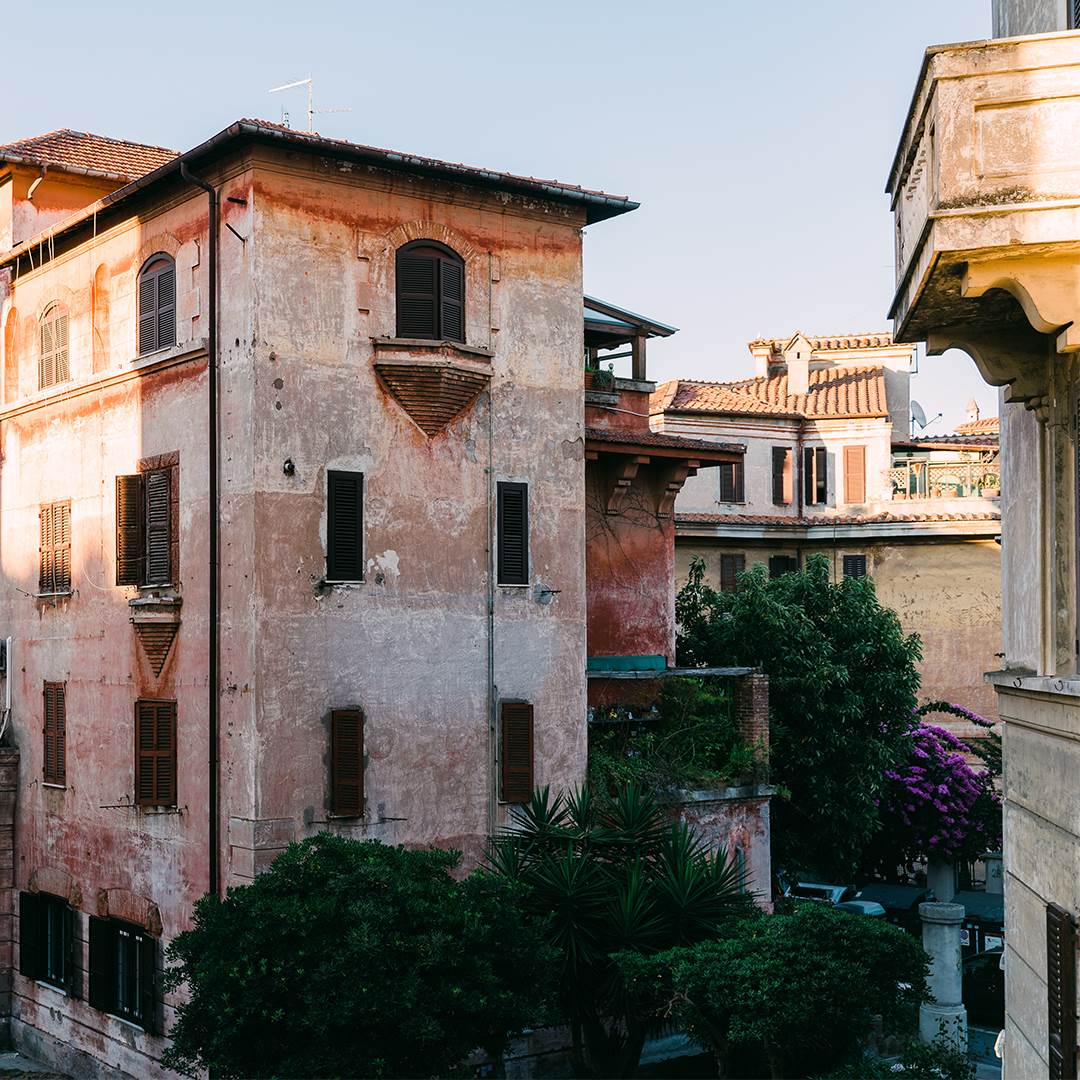
Scenes of Rome by Vespa are so iconic that they have become part of the collective imagination. Effortlessly we slip into the shoes of Audrey Hepburn and Gregory Peck, who in Roman Holiday (1953) zig-zag aboard a Vespa 125 through the streets of the historical centre, with scenes in front of the Spanish Steps and the “Mouth of Truth”; or of the paparazzi who in Federico Fellini’s 1959 La Dolce Vita use their two-wheelers to hound VIPs and movie stars up and down Via Veneto. The director Nanni Moretti, in the first episode of Dear Diary (1993) traverses the city on a 150 Sprint Veloce, guides the spectator with his monologues through the changing architecture of Rome’s suburban neighbourhoods, with unforgettable visions of the avenues with single-family homes in the garden-district Garbatella (south of Rome), the hulking 1970s apartment buildings of Spinaceto (to the southwest, beyond the Grande Raccordo Anulare freeway), the villas of Casal Palocco (between Rome and coastal Ostia), and the monument commemorating director and writer Pier Paolo Pasolini. For confirmation we turn to French journalist Daniel Psenny, who wrote an article for the prestigious Le Monde advising people to admire the jewels of the capital from the seat of a scooter. “Rome by scooter is a dream. It’s unbeatable and can be explored in its most secret parts. With a scooter, the whole city is open to you. A bicycle would be more ecological, walking would be more sporting, but discovering the city’s streets on a Vespa is a can’t-miss experience for film lovers.” And not just for film lovers, we might add.
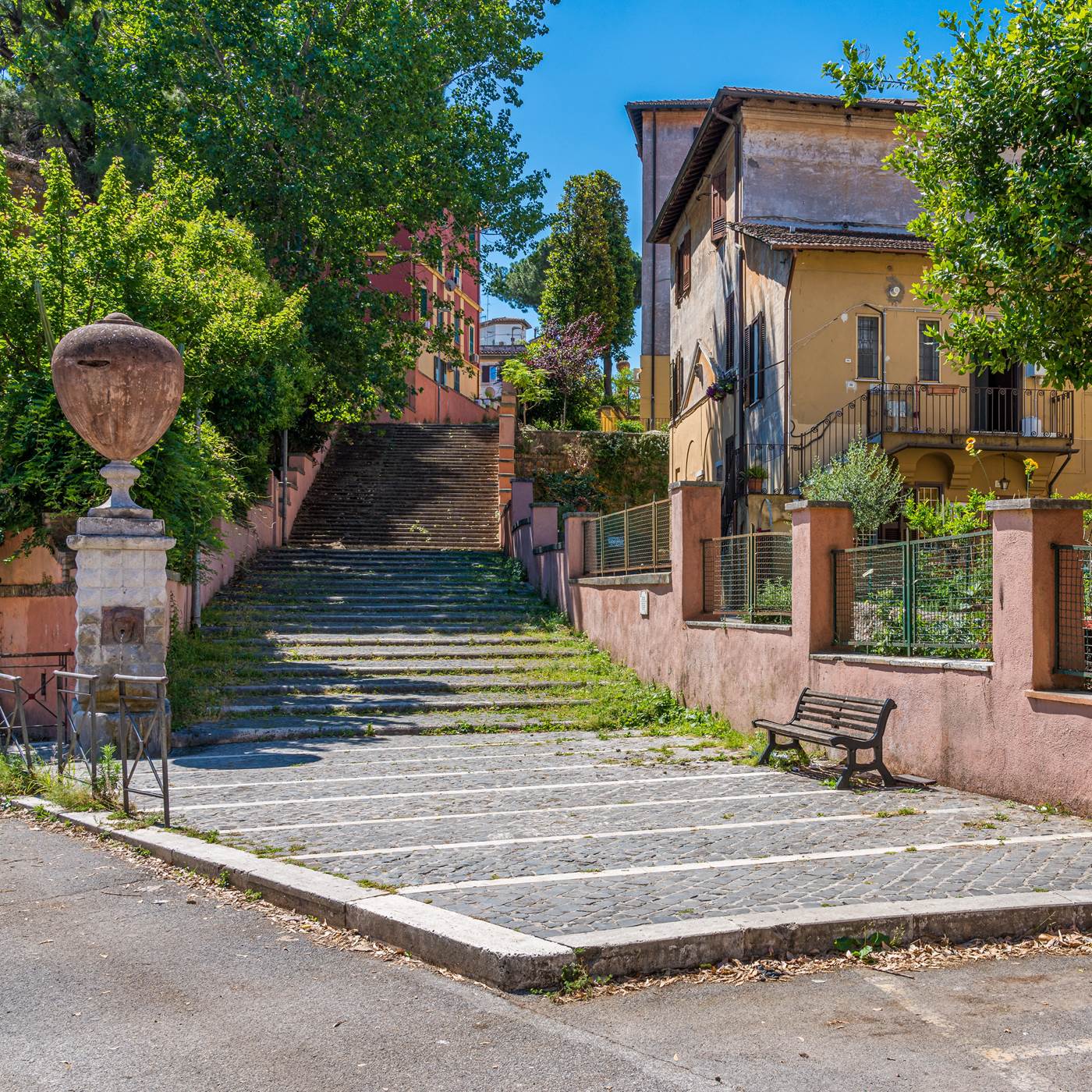
Garbatella
And who better than Nanni Moretti to guide us on this tranquil journey of discovery. “What I like most is going for a spin to see the houses, see the neighbourhoods, and the neighbourhood I like most is Garbatella” (Dear Diary). It would be lovely – writes the director in his diary – to ride your Vespa back and forth ten times a day across certain bridges over the river. In Dear Diary, Moretti finds a subtle pleasure in pointing his scooter down the avenues and lanes of this suburb of low-cost housing, inaugurated in 1927. Nevertheless, nothing peripheral is retained in today's atmosphere. The typically extroverted Roman personality is seemingly reflected in this piece of the city, that has been transformed into a vibrant mosaic of coloured apartment buildings, fruit and vegetable stands, gardens, trees and flowers, bicycles and shopping bags, cast-iron gates and old faded signs. A harmonious architectural unit in all of its parts.
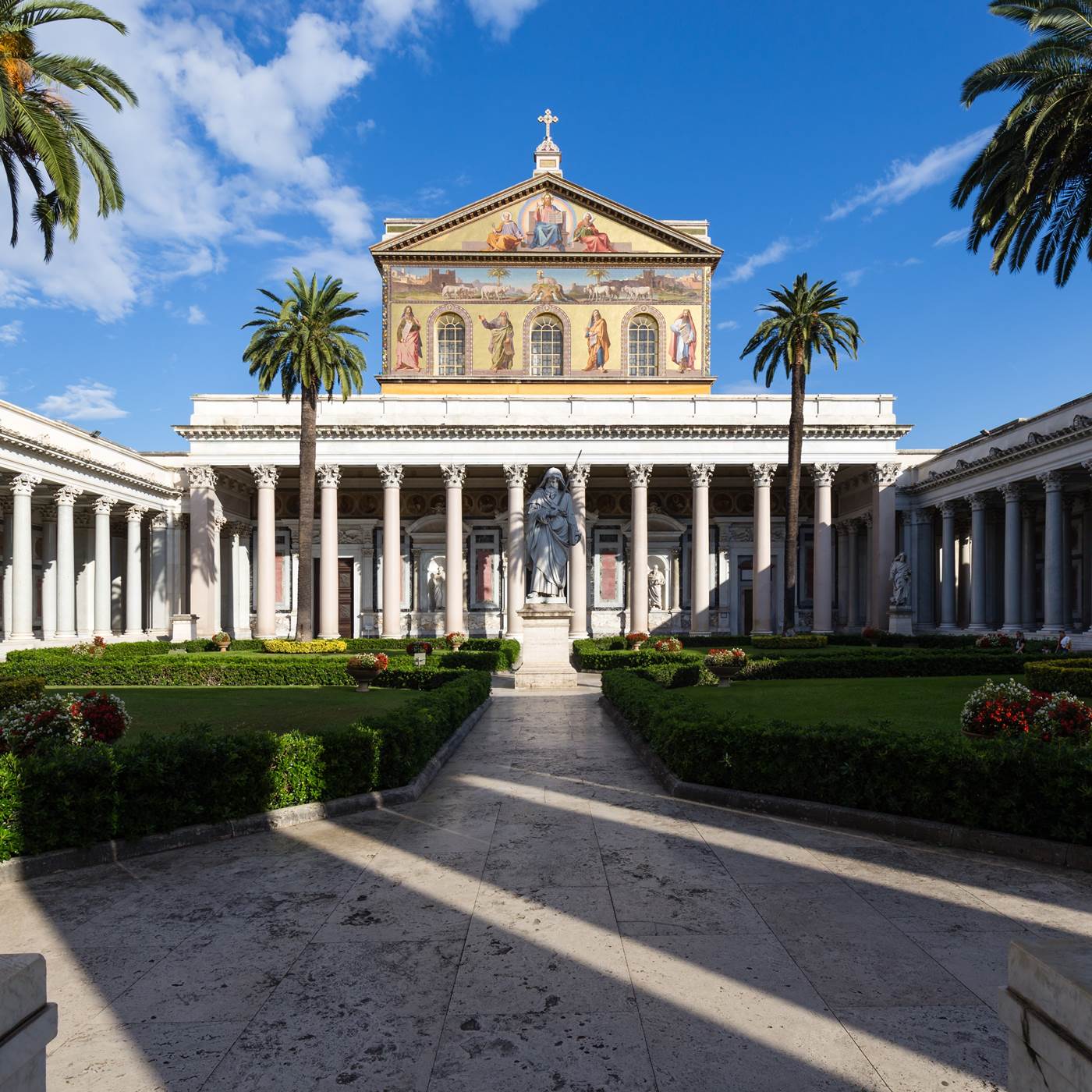
Basilica of St. Paul outside the Walls
The Garbatella neighbourhood is close to a site that is equally meaningful in terms of size and importance, and just as easy to reach by scooter: the Basilica of San Paolo fuori le Mura, “Outside the Walls,” Rome’s second largest church after St. Peter’s. The Emperor Constantine had it built in the 4th century AD outside the Aurelian Walls, on the site where tradition held that the apostle Paul, decapitated under Nero, was buried. Garbatella’s lively atmosphere and colours seem to spill out towards the basilica along Via Ostiense, characterised by an open-air gallery of graffiti art on its walls. But the ambient noise remains outside of the church which, though it is always crowded, maintains a religious silence inside its walls.
Groups of pilgrims and visitors wander around the interior full of admiration, at times almost frightened by its dimensions. Yet the basilica is no longer the one commissioned by Constantine: in the early 19th century it was destroyed by fire, then subsequently rebuilt as faithfully as possible. Fortunately, however, not all was lost, and the triumphal arch and the gorgeous slender marble columns decorated with mosaics are still those that medieval Romans would have seen.
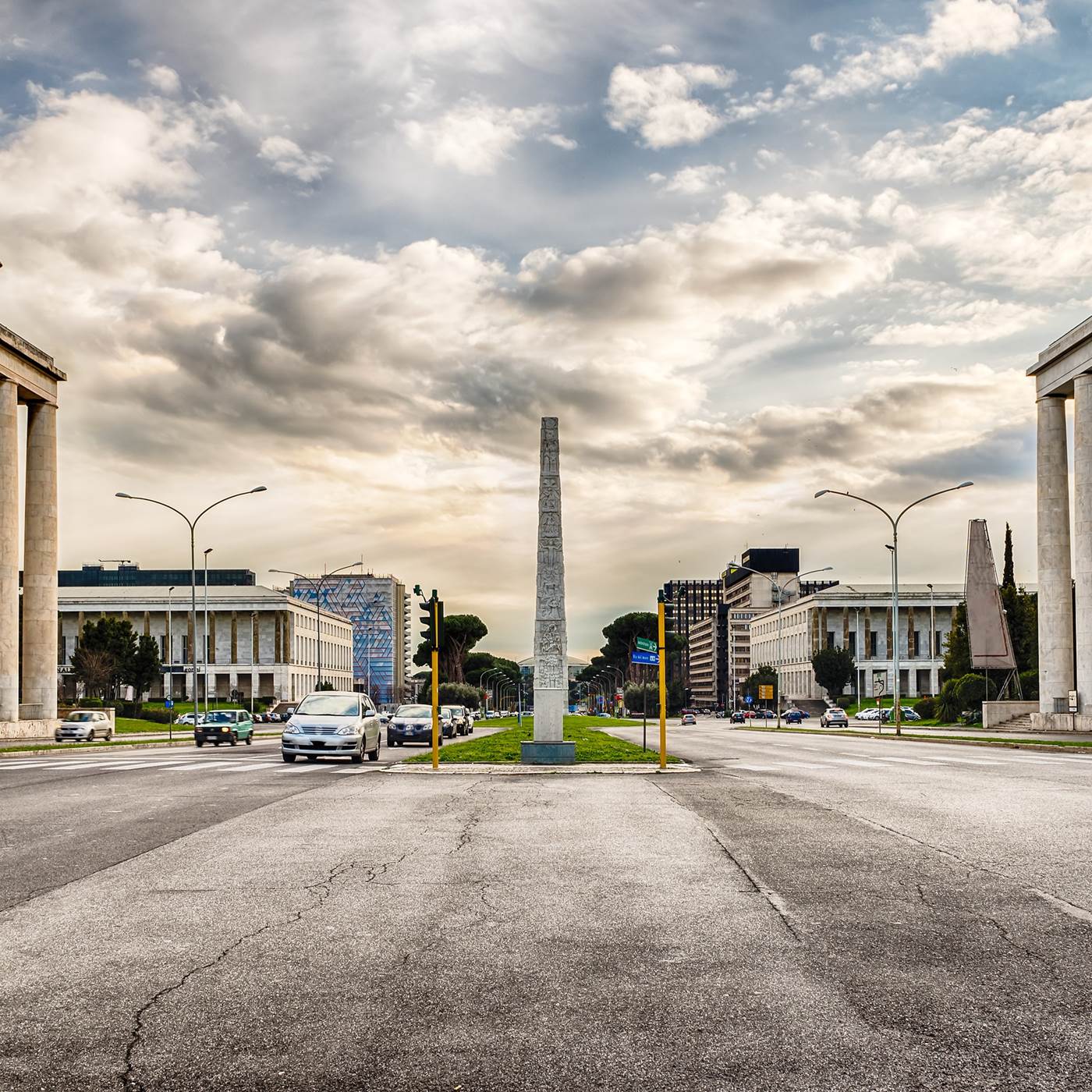
EUR
Our itinerary continues with a short Vespa ride along sea-bound Via Ostiense, which swings in parallel with Via Cristoforo Colombo. Now the background noise is no longer the chatter of markets or the murmuring of the pilgrims in San Paolo, but the friction of tyres against asphalt, until you come to a sort of metaphysical city: the EUR (Universal Exposition of Rome) neighbourhood. This strange world with its broad avenues and huge square buildings is almost a city in the city, which a group of leading architects and city planners designed in decidedly monumental dimensions in the years prior to the Second World War. What remains of the Expo, scheduled to open in 1942 but cancelled by the war, is the elegant Palazzo dello Sport and, above all, towering at the centre, the Palazzo della Civiltà del Lavoro, popularly known as the “Square Colosseum”, an emblematic, astonishing cube of regular arcades.
You can walk here, but given the size of the place, it would be more accurate to call it a hike. Compared to Rome’s historical centre, everything seems gigantic, out of scale, even the distances and sizes of the cafés and stores. And if you’re tired of admiring the architectural heritage, you can opt for a greener space, under the pines in the park, or the serenity of a canoe ride on the lake near the Palazzo dello Sport.
The EUR Museums
The 1942 Exposition aimed at introducing Italy to the world. And even today, spread throughout the EUR district are a series of museums that, judging in part from visitors’ comments that couldn’t be much more enthusiastic, are of significant interest. At the Museum of Civilisations, in the Early Middle Ages section, for example, you get to know the Lombards, who were not originally an Italian people, but who fell under Italy’s spell some 12 centuries ago.
The other five collections of the Museum of Civilisations are also organised thematically: Prehistory, Extra-European Enography, Popular Arts and Traditions, Oriental Art and Italo-African Art. Then there’s the planetarium, just reopened to the public and equipped with new digital technology.
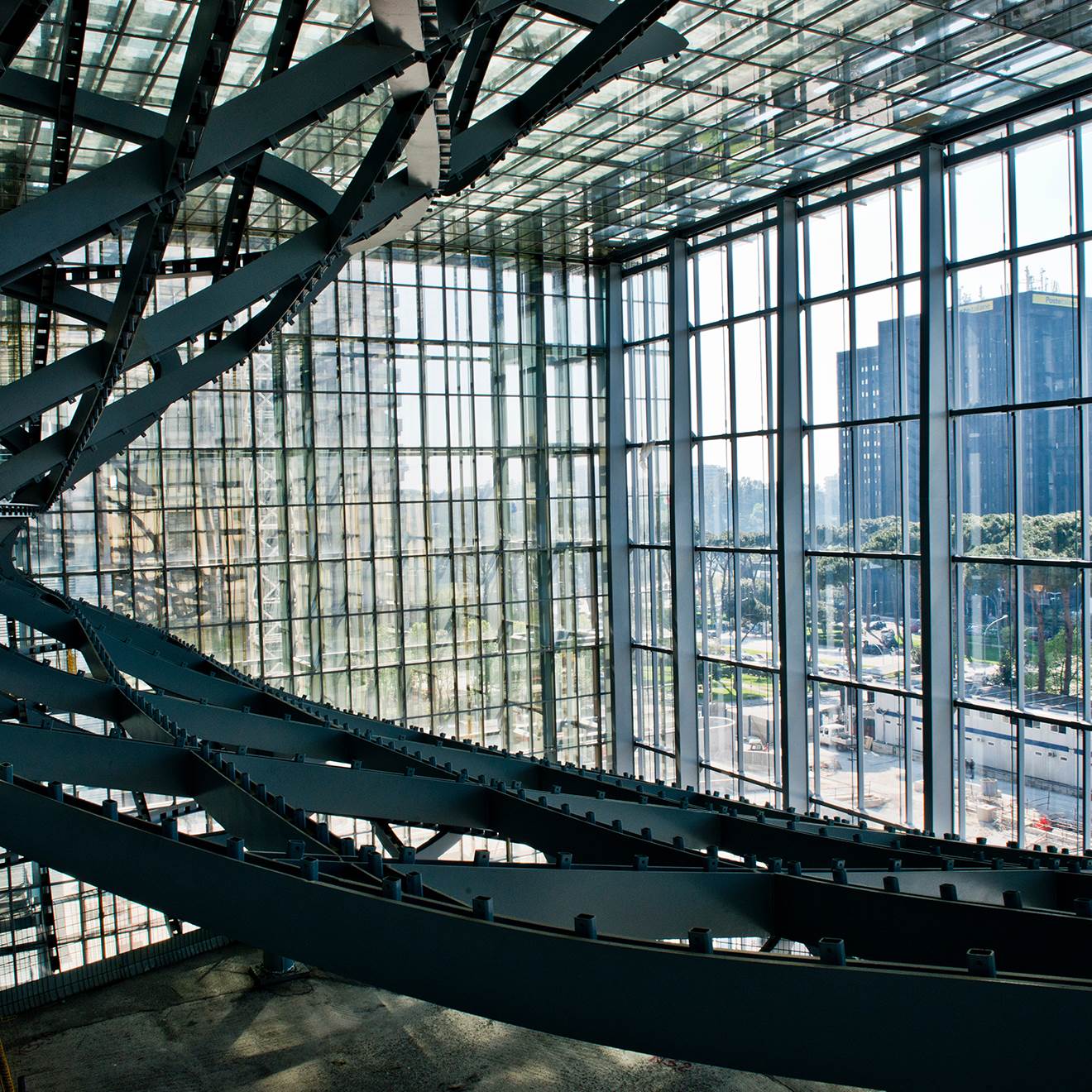
La Nuvola (Roma Convention Centre)
The convention centre, designed by Roman starchitect Massimiliano Fuksas and inaugurated in 2016, is the most recent arrival on the road from Rome to the sea. It is, quite literally, an “aerial” building, a sort of rectangular shell comparable in size to the EUR’s Palazzo della Civiltà del Lavoro, but in transparent glass and containing a suspended 3,500-m2 nuvola (cloud) of metal and Teflon. And it’s no surprise that the structure has been nicknamed “The Cloud”: as you gradually ascend by escalator, you feel as though you’re rising, floating up through the light, curvilinear spaces into the sky itself. And if you can’t visit it from the inside, La Nuvola is certainly worth photographing from Via Cristoforo Colombo: from here, heaven seems very much within reach.
in partnership with![]()
USEFUL INFO
Distance from Castel Romano Designer Outlet to downtown Rome: roughly 25 km. Travel time: roughly 45 minutes
Palazzo dello Sport. Piazzale Dello Sport 1, tel. 06540901, www.palazzodellosportroma.it
Palazzo della Civiltà del Lavoro. Quadrato della Concordia, tel. 0633450970, www.fendi.com
Museum of Civilisations. Piazzale Guglielmo Marconi 4, tel. 06549521, museocivilta.cultura.gov.it
Planetarium. Piazzale G. Agnelli 10, tel. 060608, www.planetarioroma.it
La Nuvola (Roma Convention Centre). Viale Asia 40-44, entrance at the corner of Via Cristoforo Colombo, tel. 0654513701, wwwromaconventingroup.it

Eat & Stay
Extending your trip to Rome and needing somewhere to stay? Here are some of our favourite places you might wish to consider…in order to make your vacation even more special and unforgettable.
Plan Your Visit
To Castel Romano


